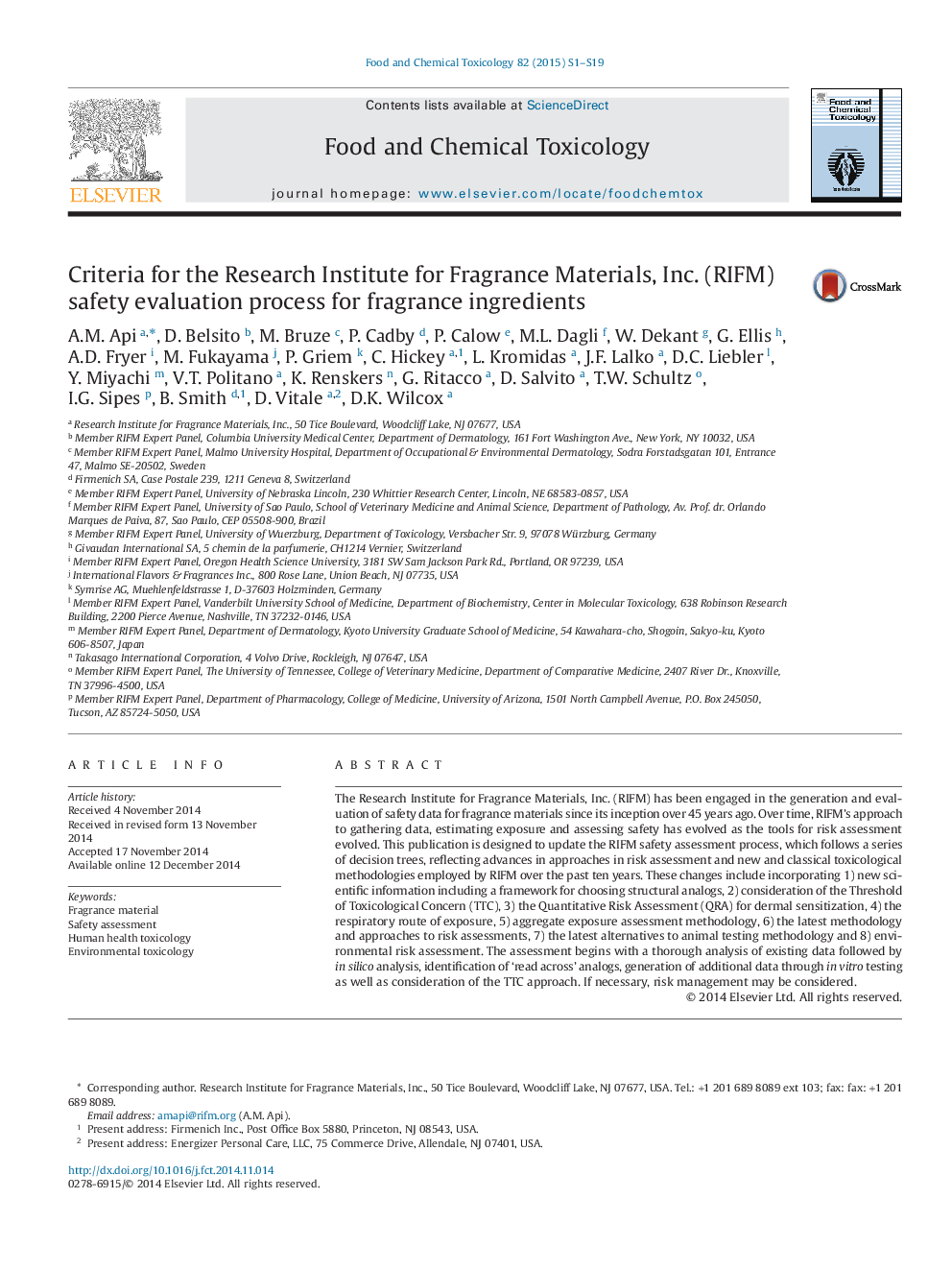| Article ID | Journal | Published Year | Pages | File Type |
|---|---|---|---|---|
| 2584911 | Food and Chemical Toxicology | 2015 | 19 Pages |
•This publication is designed to update the RIFM safety assessment process, which follows a series of decision trees.•This process incorporates advances in approaches in risk assessment used by RIFM over the past ten years.•A framework for choosing structural analogs and consideration of the Threshold of Toxicological Concern (TTC) are included.•Quantitative Risk Assessment (QRA) for dermal sensitization and aggregate exposure assessment methodologies are included.•The latest alternatives to animal testing methodology and environmental risk assessment are included.
The Research Institute for Fragrance Materials, Inc. (RIFM) has been engaged in the generation and evaluation of safety data for fragrance materials since its inception over 45 years ago. Over time, RIFM's approach to gathering data, estimating exposure and assessing safety has evolved as the tools for risk assessment evolved. This publication is designed to update the RIFM safety assessment process, which follows a series of decision trees, reflecting advances in approaches in risk assessment and new and classical toxicological methodologies employed by RIFM over the past ten years. These changes include incorporating 1) new scientific information including a framework for choosing structural analogs, 2) consideration of the Threshold of Toxicological Concern (TTC), 3) the Quantitative Risk Assessment (QRA) for dermal sensitization, 4) the respiratory route of exposure, 5) aggregate exposure assessment methodology, 6) the latest methodology and approaches to risk assessments, 7) the latest alternatives to animal testing methodology and 8) environmental risk assessment. The assessment begins with a thorough analysis of existing data followed by in silico analysis, identification of ‘read across’ analogs, generation of additional data through in vitro testing as well as consideration of the TTC approach. If necessary, risk management may be considered.
